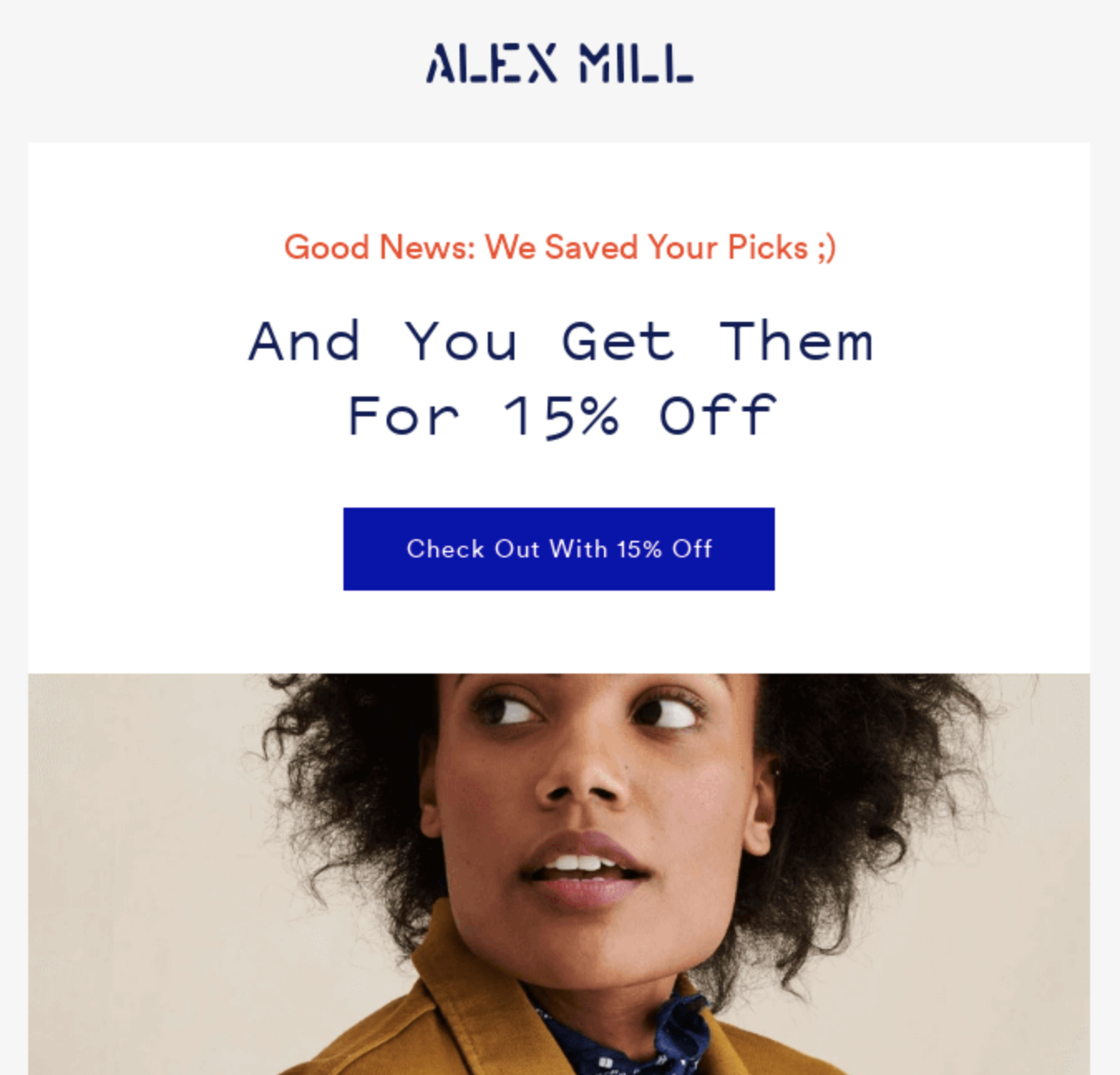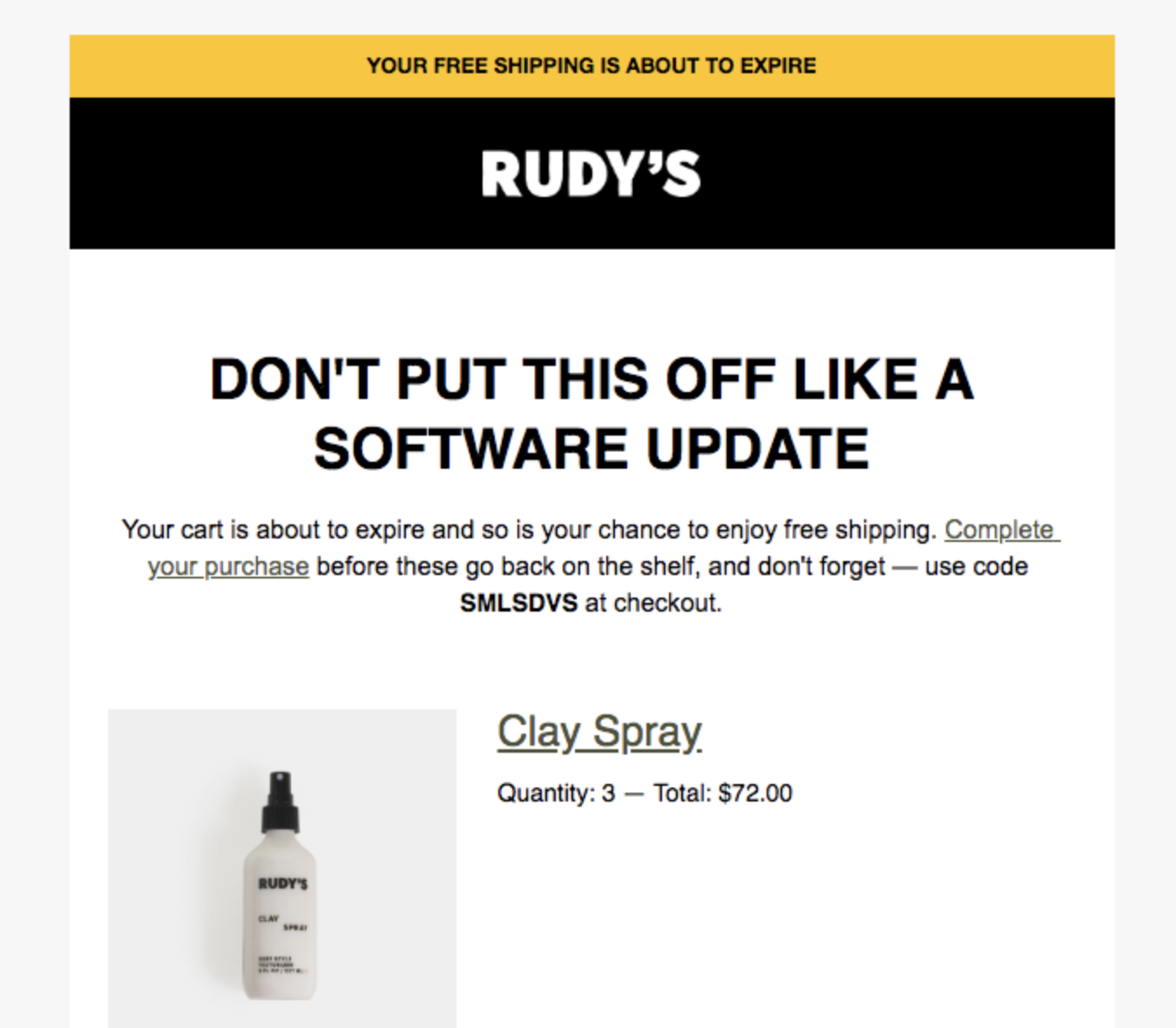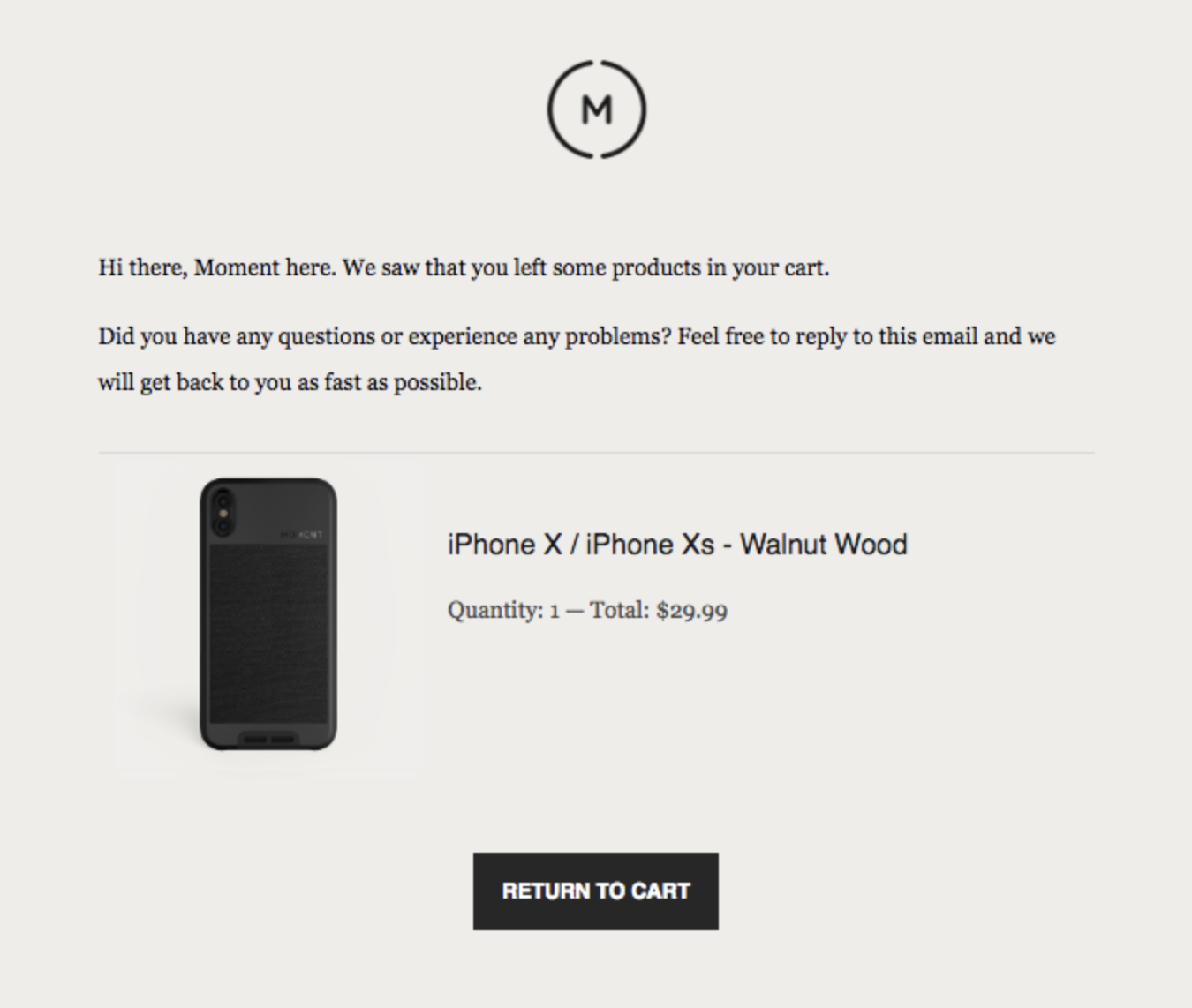A study conducted by SaleCycle states that around 75% of people buying online leave products in their online cart and never finish their purchase. If that abandonment rate made your jaw drop, your reaction was the same as mine – that's a lot of people and billions of dollars in transactions that never took place.
You may not think that cart abandonment is a problem for your business, but probabilistic thinking affects everybody. Do a small experiment using yourself as the study subject; go to Amazon or any online store that you use frequently. The chances are that you have a product in the cart waiting for you that, for some reason, you didn't finish the buying process.
The most common reasons for shopping cart abandonment
Reasons for cart abandonment may vary a lot. Some of them are more technical. You can correct others by performing A/B tests – product description, size and position of your images, the CTA – and last but not least, you can use emails to recover some of those customers that left without finishing their purchase.
But before we talk about how you can use emails to recover some of the customers that have an item abandoned in a shopping cart, let's go through some of the more common reasons for that to happen.
People need more trust.
Before giving you their financial info, people want reassurance that your business is legit. Of course, this requires hard work on your brand. Still, while you are building a reputation for yourself, you can use Social Proof (reviews, notifications), trust badges from payment services, and you can provide a money-back guarantee, for example.
Shipping Costs
Usually, shipping costs are one of the last pieces of information someone will see before clicking the Buy button, a lot of the time. And people are shocked to discover how much they have to pay to receive their item. So they decide not to go forward.
Bug
User testing and putting yourself in your customers' shoes may uncover some bugs on your website that you never knew existed. For example, sometimes people try to buy your product, but technical problems prevent them from advancing to the checkout or even making a payment.
Window Shopping or Price comparison
Like people do in real life when looking for something particular, they research many options and compare prices, features, benefits, and even shipping costs. They may or may not come back. In this case, an email offering a discount on the product price or shipping cost could win you a customer.
You don't accept a payment option that they are comfortable using.
Last week this situation happened to me. I saw a Machine Learning course with a considerable discount, one of my first thoughts was: I don't think I have the time to go through this course now, but I should buy it and watch it later in the year.
But during the checkout, they had ONLY one payment method, and it wasn't one that I knew, and on top of that, it didn't accept my country.
I had to abandon the purchase and leave the item in the cart.
Abandoned cart emails – tips and examples
As discussed above, website issues sometimes prevent people from following through, and they abandon their items in the shopping cart. However, even after fixing bugs, working on your copy, making your site more trustworthy, people will still leave items on their cart.
You can use emails to convince them to come back and finish their purchase for those cases. How? This is what we will discuss next.
Personalized Subject Line
"Hey, Nuno. You left something behind."
"Are you still interested in this Element skateboard, Nuno?"
People know that personalization on emails is automated, but it still feels better than a generic headline. You don't need to stop by using their first name. You can use the product name as well to make it more personal.
Discounts
"Get Them for 15% Off!"
"50% off on your shipping costs"
You don't want to make a habit of giving discounts to people because they will learn the pattern and abandon the items in their shopping just to trigger the discount automation. Instead, use this for people purchasing from you for the first time. It may win you a long-term relationship, especially if you have a subscription product.
Use urgency to speed things up.
"Get your skateboard tomorrow if you buy it today, Nuno."
"Don’t let free shipping go to waste."
We all like to receive the items we buy online as soon as possible, and you could use this as a secret weapon to persuade someone to come back and finalize the purchase. This can cost you a little bit, so please run the numbers before abusing this tactic.
Simplicity most of the times works
"Complete your order."
"Don't forget to finish your purchase."
"Leave something behind?"
We love to get fancy, funny, and clever with emails, mainly because we see other brands doing it. But the truth is, simplicity can and will work just fine. Talk to your customers in a direct way.
If someone is interested in the item, they will come back and buy it, sometimes it wasn't the right moment, or they need to do more research before buying. Things are simpler than we imagine sometimes.
Okay, I get it, but how many emails should I send?
This is a matter of preference, you can send one email or ten emails in a sequence if you want, but the most common is a three emails sequence:
– one after the first hour; – another after the first day; – and a last one on the third day.
After that, you will just annoy the person.
Final thoughts
Abandoned cart emails are an important tool that can and will help you increase sales. Software like Bento make it easy to set up and if you didn't create those emails in your account, you should because the numbers are clear; the majority of online shoppers abandon items in their shopping cart.
Use the examples in this article to learn and start recovering some of the money you are leaving on the table.
Enjoyed this article?
Get more email marketing tips delivered to your inbox. Join 4,000+ marketers.
No spam, unsubscribe anytime.
 via
via  via
via  via
via